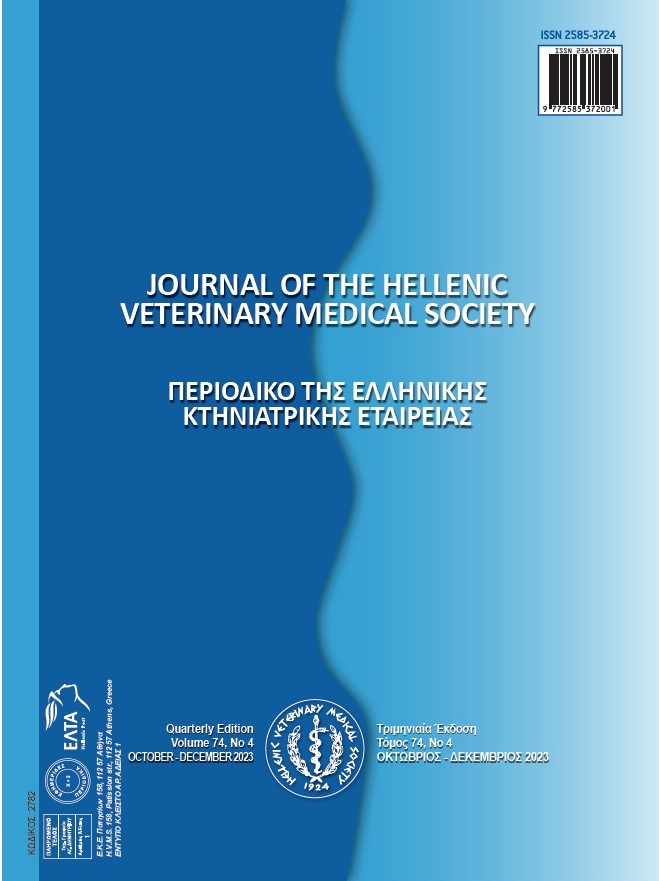Biometric radiographic features between foot lesions and long toe under-run heel in donkeys

Аннотация
Abstract
The present study aimed to document the relationship between biometric foot measurements and different radiographic lesions in a group of donkeys' feet with long toe under-run heel. The common radiographic foot lesions were pedal osteitis complex in 26 (86.6%) and navicular bone reaction in 8 (26.7%). Osteophyte reaction was identified at proximal phalanx in 8 (26.7%) and middle phalanx in 10 (33.3%). Pastern and coffin joints osteoarthritis were found in 4 (13.3%) and 9 (30%) respectively. Palmar soft tissue calcification and eminence of 2nd phalanx were reported in 5 (16.6%) and 1 (3.3%) respectively. The dorsal hoof wall angle (DHWA) was positive significantly correlated with the axis of the distal phalanx, distal phalanx and proximal palmar cortex angles, the heel angle, and distal phalanx solar border angle. The increased dorsal hoof wall length (DHWL) was positive strongly correlated with dorsal coronary band height, medial wall length, lateral wall length, lateral coronary band distance, medial coronary band distance, lateral distal phalanx to bottom distance, and medial distal phalanx to bottom distance. The dorsal hoof wall and heel angles reflected increased stress on the hoof capsule, distal interphalangeal joint, navicular bone, and palmar soft tissue structures. The low heel, the distal phalanx solar border angle and under development of the palmar section of the hoof indicated distal phalanx was slightly slippage dorsally, increased tension on the DDFT, navicular bone, and pedal osteitis complex in long toe under-run heels. This study demonstrated a relationship between biometric foot measurements and the presence of radiographic foot lesions detected in long toe under-run heel in donkeys.
Article Details
- Как цитировать
-
El-Marakby, A., Abdelgalil, A., Mostafa, M., & Soliman, A. (2022). Biometric radiographic features between foot lesions and long toe under-run heel in donkeys. Journal of the Hellenic Veterinary Medical Society, 73(3), 4559–4566. https://doi.org/10.12681/jhvms.27827
- Выпуск
- Том 73 № 3 (2022)
- Раздел
- Research Articles

Это произведение доступно по лицензии Creative Commons «Attribution-NonCommercial» («Атрибуция — Некоммерческое использование») 4.0 Всемирная.
Authors who publish with this journal agree to the following terms:
· Authors retain copyright and grant the journal right of first publication with the work simultaneously licensed under a Creative Commons Attribution Non-Commercial License that allows others to share the work with an acknowledgement of the work's authorship and initial publication in this journal.
· Authors are able to enter into separate, additional contractual arrangements for the non-exclusive distribution of the journal's published version of the work (e.g. post it to an institutional repository or publish it in a book), with an acknowledgement of its initial publication in this journal.
· Authors are permitted and encouraged to post their work online (preferably in institutional repositories or on their website) prior to and during the submission process, as it can lead to productive exchanges, as well as earlier and greater citation of published work.



